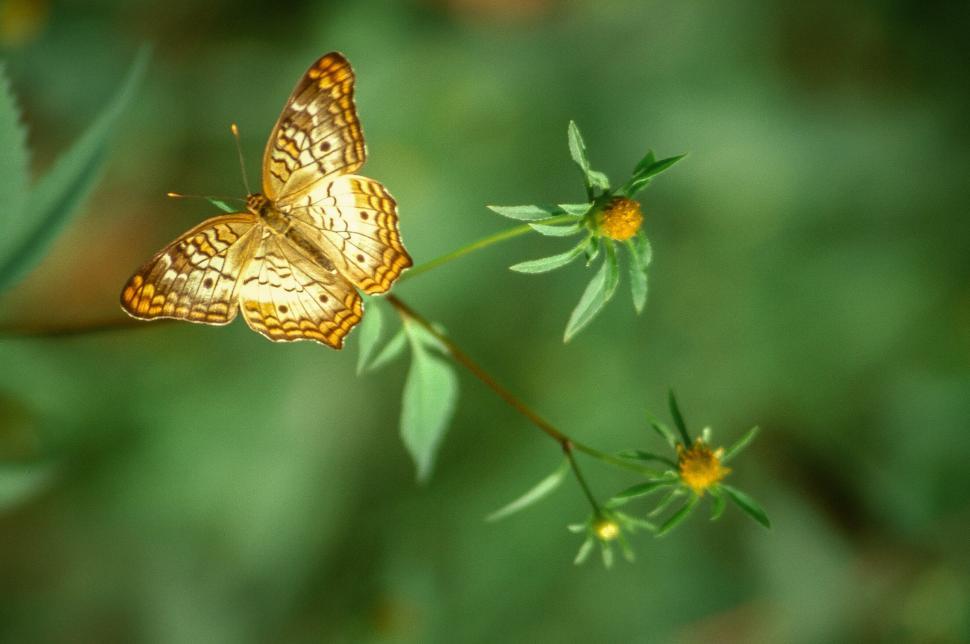ANIMAL: White Peacock Butterfly Anartia jatrophae Type of Animal: Brush-Footed Butterfly Habitat: Fields, parks, areas near ponds/streams, disturbed areas, canals, canal banks, ditches, roadsides, temporary pools, lakes, areas w/ weedy low-lying plants, open gardens, grassland, savanna, scrub forest, forests, rivers, suburban/urban areas, towns, riparian areas Location(s): Ranges from US through Mexico, Central America, & West Indies all the way to Argentina Appearance: Upperside white w/ light brown markings & double row of light crescents at margins, forewing has 1 round black spot, hindwing has 2. Winter form larger/paler than smaller darker summer form. Caterpillars are black w/ black spines & small white spots. Food/Diet: Adults eat nectar/pollen/petals/plant parts from Bidens, soldierbushes (Tournefortia), frogfruits (Phyla), Ruellia, Carolina false vervain, Cordia, Casearia, Plumbago, & hempweed/hempvine. Caterpillars eat Ruellia, water hyssop (Bacopa), frogfruits, Lippia, & Carolina false vervain. Status in Wild: Stable Conservation: Breeding in butterfly gardens, zoos, aquariums, & museums Lifestyle: While social/colonial, males guard small territories of 45-50 ft in diameter. Territories in very close proximity. Additional Info: Called: Male Female Young: Caterpillar Group: Flutter Gestation: 4-14 days Life Span: 1-4 months Body Length/Wingspan: Male: 2 in Female: 2.75 in Caterpillar: 1.65 in Main predators are birds, predatory insects, mice, frogs, & spiders. Females lay eggs singly on/near host plants. Eggs hatch into caterpillars after 4-14 days. Caterpillar stage lasts 2-4 weeks. Chrysalis (pupal) stage lasts another 1-2 weeks. After this stage, they transform into butterflies which can last as few as 6 days to as long as a few months. These butterflies can breed more than once in a lifetime & breed all year round in warmer parts of range. Like many butterflies, they’re important pollinators. Adults often fly low to the ground. They’re fast erratic fliers. Active during the day (diurnal). Males don’t just protect territories from other males, they also protect it from other insects. Males often perch & patrol areas waiting for receptive females. Also called the Cenicienta & Princess Perlada. Multiple generations produced each year. Fun Fact(s): Get name from large eye-spots on each of wings, reminding one of peacock feathers. Caterpillar spines help in deterring predators & coloration aids in camouflage. Eye-spots may be used to scare predators.
